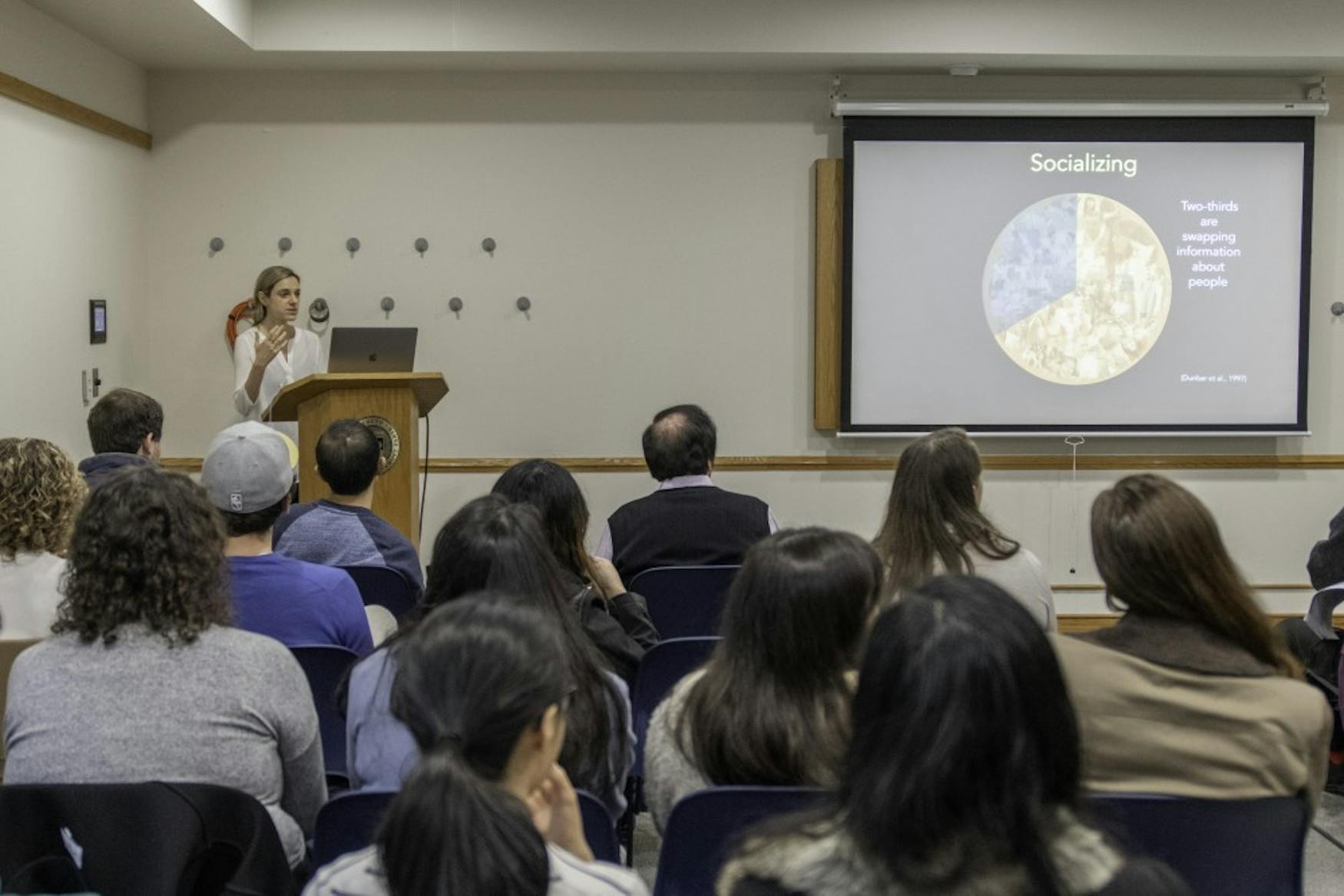Scholar explains research on social working memory
At any given moment, Meghan Meyer explained, roughly 18 million Americans are socializing, and about two-thirds of those interactions involve the exchange of information about people. We are constantly juggling information about ourselves and those around us. But, Meyer asked, “How do our brains keep track of all this social information that’s chronically buzzing around us?”
That’s the question Meyer has been studying for the last six years, she said in her Thursday lecture, “Social by default: Outlining the social psychological functions of the default network.” Meyer is a social neuroscientist and an assistant professor at Dartmouth College, and pioneered the concept of social working memory in her 2012 paper, “Social Working Memory: Neurocognitive networks and directions for future research.”
Meyer began by explaining the significance of her research. She first defined cognitive working memory, which is the ability to think through a problem without external resources like a pen and paper. “A classic example of cognitive working memory,” Meyer said, “is if you’ve ever imagined the alternative moves while playing a game of chess. Then you’ve engaged [cognitive] working memory.”
She contrasted this with social working memory, saying, “Instead of imagining the consequences of a chess move, you might imagine the consequences of befriending your best friend’s ex-partner, and how that might make your friend feel.”
Meyer then explored the way these types of memories affect the brain. “It turns out that the regions that social neuroscientists see engaged in tasks that require social reflection are also part of a larger network in the brain, typically referred to as the default network, and these regions tend to be engaged … almost reflexively, when the brain is at rest.”
Meyer said that before her study, if researchers were to conduct a study in which participants were asked to solve a math problem for 20 seconds and then were given a 20-second rest period, the scientists expected to see total inactivity in the part of the brain responsible for social memory. Instead, she explained, she found that those social parts of the brain are dormant while solving the math problems, but they light up with activity in the breaks between problem-solving.
When researchers first observed this puzzling behavior, they hypothesized that it was because participants let their minds wander and just happened to think about social situations during those 20-second breaks.
To investigate whether that was the case, Meyer, along with other researchers, recently conducted another study in which participants were asked to do essentially the same task but with two-second breaks instead of 20-second breaks. “When you think about it, two seconds is really not enough time to start explicitly thinking about why your roommate drank the milk, or whatever,” she said. But the participants still showed significant activity in the social memory part of the brain during the breaks, even when those breaks were too short for them to consciously think about social situations.
After publishing their new paradigm, Meyer and her team of researchers had to understand its limitations. Their method, which asked participants questions about their real-life friends, was only applicable to participants with at least 10 friends, which would limit researchers working with subjects with autism spectrum disorder. To help solve this problem, she said, her team devised another study where participants were shown a trailer for the TV show “Orange is the New Black,” in which numerous characters have complex, often competing relationships with one another. The proctors then asked participants questions that were similar to ones they asked other participants about real-world relationships.
Meyer concluded by discussing the implications of her studies and described further areas of research that she’d like to pursue, especially understanding how social working memory relates to cognitive working memory. For instance, studies have indicated that people with generalized anxiety disorder tend to have reduced cognitive working memory compared to the general population. Meyer expressed an interest in exploring whether those with GAD have similarly reduced social working memory.




Please note All comments are eligible for publication in The Justice.